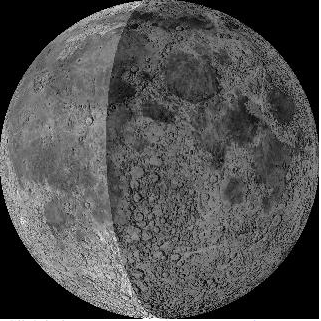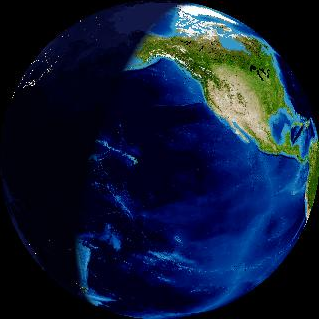Amateur radio operators throughout Hawaii responded to the Kiholo earthquake that occured off shore of Kona on October 15, 2006.
Activities are chronicled here, as well as preparations you can take to be ready for the next disaster or emergency. It's not a question of "If", it's a question of "When".
Enjoy, and feel free to drop me an e-mail if you have any questions.
The Event
Amateur radio operators responded to the needs around the Kona Coast area following the magnitude 6.7 earthquake.
ARES and RACES operators responded to State and Oahu Civil Defense. Immediately after the first quake stopped shaking the island of Oahu at 7:10 am, AH6RH started emergency operations on the 146.88 repeater. AH6RH then moved to the 147.06 repeater and started emergency operations on that frequency before commercial power on Oahu failed in the first minute after the first quake stopped. AH6RH arrived at State CD EOC within twenty minutes at 7:30 am, followed by AH6CP at 7:32 am then KH6MP. State RACES operations in the EOC, KH6HPZ, started at 7:35 am, and State CD RACES operations ended at 5:20 pm. Oahu RACES operations at OCDA EOC, KH6OCD, ended at 10:55 pm.
Stations active on the Big Island providing HF and VHF communications with State CD included: K7CMK, WH6DQ, KH6EL, NH7HI, NH6M, KH7MS, WH6N, N5PIV, AH6RR, KH7T, WH6WI, KH7ZT.
Stations active on Maui providing HF and VHF communications with State CD included: WH6BXK, KH7CC, AH6GR, KH6H, AH6SG, WH6VE, WA7YAT.
At State Civil Defense, AH6RH, AH6CP and KH6MP responded as RACES coordinators and operators. They were joined about two and a half hours later by AH6QO, Section Emergency Coordinator. The stations rotated among the HF and VHF operating positions, running messages with the CD operations desk, and checking with staff on their various needs and concerns. Other amateurs present fulfilling non-radio communications roles included: NH7OW, WH6PU, WH6QL, WH6MV, NH7ZV, NH7ZT.
At Oahu Civil Defense Agency, AH6LT responded as the RACES coordinator. KH7GK performed NCS duties from his home a few miles away, operating on battery power. Other amateurs fulfilling non-radio communications roles at OCDA included: KH7EC, KH7FR, KH2KX, KH7RF, N7WAP. AH7E and KH6QX came in to provide additional coverage with radio operators.
A number of stations comprising the healthcare communications known as HealthComm that responded to this event included: KH6DQ, KH6HC, KH6KPM, NH6WK, NH7WL NH7ZD. HealthComm deployed the radio responder go kits at St. Francis Liliha, Wahiawa General and St. Francis West hospitals. St. Francis West had an extended power outage due to the failure of the building's power transformer. A replacement transformer was diverted from a renovation project at Kaiser hospital to St. Francis West.
Kauai, Molokai and parts of Big Island had power during the event, and power began to be restored into the Kona area mid-afternoon. Power was restored on Maui starting around 9:15 am and continued through the afternoon. Power on Oahu started around 12:05 pm and continued through 1:55 am Monday.
As they did during Hurricane Iniki, Broadcast station KSSK Radio did a superb job of exchanging information with the public and keeping them informed. KSSK Radio (AM 590 and FM 92.3) is the designated emergency broadcast station in Hawaii to receive official information from sources and relay it to the general public. They are equipped with generators to remain on the air during outages of commercial power.
The overall emergency management plan worked, especially when field reports are received at Civil Defense, incorporated into the response action plan, and relayed to the public via KSSK Radio, broadcast and cable TV live press conferences. Not all media outlets were available due to lack of power on Oahu, and not all residents had working radios and TVs. MAKE SURE YOU HAVE A PORTABLE AM/FM RADIO WITH EXTRA BATTERIES, OR ONE THAT HAS AN INTERNAL HAND-CRANKED GENERATOR!
See: www.arrl.org weekly ARRL letter and www.arrl.org ARES newsletter
I understand talking with others that KPOA-FM on Maui had relayed the PTWC bulletin indicating no destructive tsunami was generated. (A tsunami is always generated -- its whether it is destructive or non-destructive.) Also, I understand the news organizations dialing into the conference bridge did not put their phones on mute, which added background noise to the press conference.
Articles
The Star-Bulletin did a five part series of one-year-after follow-up articles to the Kiholo quake.

- Part 1 - The pain remains: Big Island earthquake -- one year later
- Part 2 - Earth cracks walls, not faith of church
- Part 3 - Study shows quake was rarity
- Part 4 - Waterways require work
- Part 5 - Electric company makes switches
Reminders
A reminder: Being prepared is a personal responsibility. Being aware of emergency response and recovery procedures before an incident is also a personal responsibility. See: Personal Preparation
A second reminder: During an emergency, emergency responders use the regular phone lines to activate and coordinate a response, especially between agencies. Nothing is more frustrating to a responder than to get no open phone lines, busy cell phone networks and busy signals -- it slows down their response. So do YOURSELF a favor, stay off the phone and keep the phone lines clear! Make ONE call to a relative on the mainland, let them know you're okay, and tell them to call the other relatives on the mainland. That frees up the phone lines for local emergency response.
A third reminder: At the exact moment a disaster occurs, assume everything is broken. What the responders are doing is building a response. If things are working, that's one less headache and the response is one step closer. If its broken, it'll be fixed in priority order and other efforts of the response will be diverted to fix the broken item needing attention. If people, equipment or materials need to be moved as part of that response, especially from a warehouse or staging center to the scene of the response, recognize that it takes some time. In the meantime, improvise.
A fourth reminder, for amateur radio operators: Practice your message handling procedures, and practice NOW being brief, crisp and to the point when on the air during an emergency. The first three hours during an emergency are the most critical, and the first hour is especially important in jump starting a response. Every second counts.
If you're talking excessively on a frequency, repeater or channel being used to coordinate a response, that's another second you're keeping another emergency responder from using that radio resource and response will be delayed. Refrain from giving unnecessary or redundant status and observations if another nearby station has already given the same information.
Your waste of valuable seconds during a critical time is not welcome by the those responding to the incident. Consider that if the Kona earthquake had generated a tsunami, it would have hit the southern shores of Maui in about ten minutes, and it would have hit Oahu in about 25-30 minutes. Each message and each second counts.
If you have to, think through your message before you key the microphone and talk. Those who DX and contest regularly have an advantage because they have to think and be clear with the short transmissions rather than being embarrassed in front of their peers. If you want hands-on practice, try contesting.
Learn to give only your callsign suffix when calling or breaking in. You do not have to give your prefix. It will shave off another second with each use.
- Give your one, two or three letter suffix phonetically. For example, wait for a break in the action, key down the mike and say "Romeo Hotel." and let go the mike. If you're breaking in, say "Break. Romeo Hotel." (One second saved.)
- If you're asking Net Control for permission to contact another station, say: "Romeo Hotel for A-H-6-C-P."
- Wait for the other station or net control to acknowledge your suffix. "Net control. Romeo Hotel, go ahead." (Second second saved.)
- Then respond with your full callsign.
- Pass your message or exchange, and do it quickly.
- Give your full callsign only when you're done and clearing out -- and give only your callsign. [Part 97.119(a)] You do not have to identify the other station, and the time is too valuable to waste. (Saves two more seconds, a total of four seconds saved.)
Lunar Data
The quake did not occur with the usual coinciding of the new or full moon. The moon was only 33% full; within the last quarter on the way to becoming a new moon. However, the moon was almost directly above Hawaii with tidal forces and ocean water exerting pressure on the crust of the Earth.
Moon image courtesy of the BMDO/NASA's Clementine satellite, Earth image courtesy of the NASA Earth Observatory and computation courtesy of Fourmilab.
Solar Data
Spaceweather.com has an archived web page showing the condition of the sun that day. There were no sunspots, and only an A1 class solar flare.
Copyright © 1997-2015 Ron Hashiro
Created October 17, 2006 Updated: October 20, 2011 DISCLAIMER: Ron Hashiro Web Site is not responsible for the content at
any of the external sites that we link to and therefore
are not necessarily endorsed by us.


